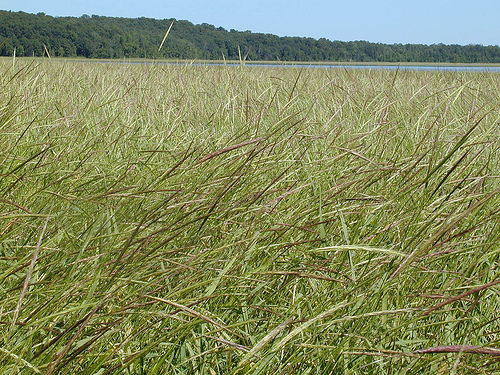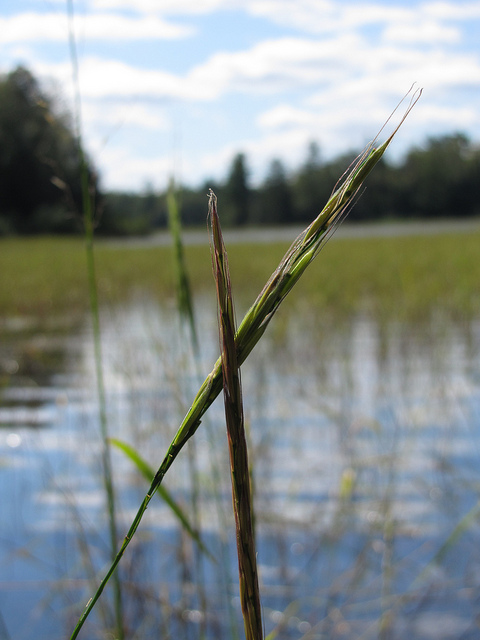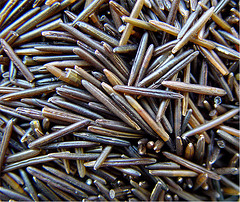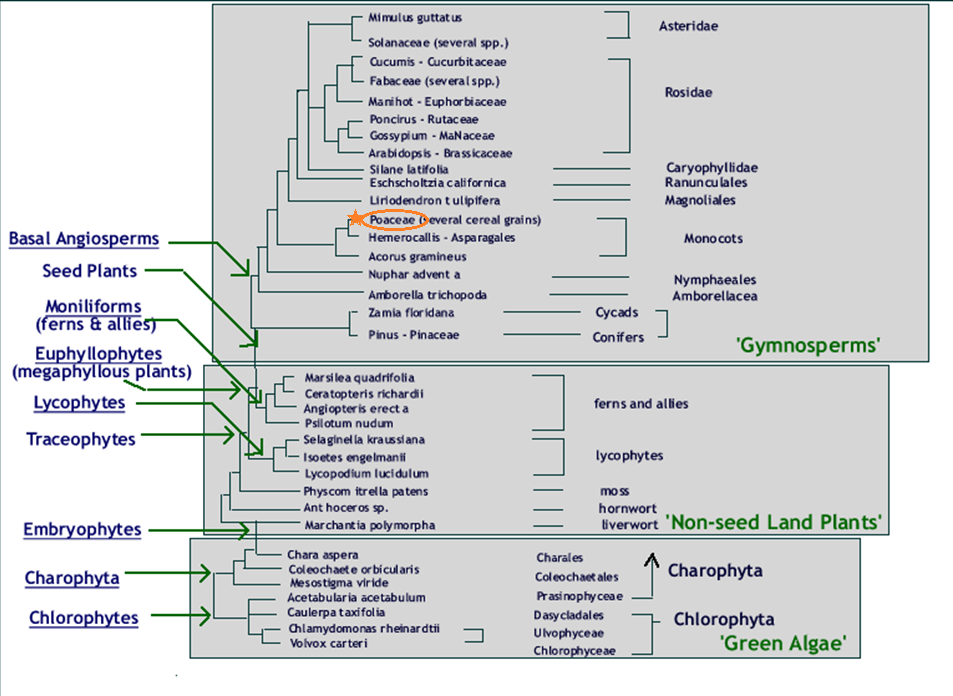Classification
| Wild rice is uniquely classified as Zizania aquatica. The English translation of this name means aquatic weeds. To the Anishinaabeg people of the Great Lakes Region, this grain is manoomin and literally translates to 'the good grain'. Read on to see exactly how it's classified and where it fits in. |
Image from www.flickr.com. Some rights reserved by user Esagor. |
After each level of classification you will find the group where wild rice is along with a brief explanaition of what characteristics all organisms grouped there share.
Image from www.flickr.com. Some rights reserved by user Superior National Forest. |
Domain: Eukarya- All member grouped here contain membrane-bound organelles and a nucleus. Supergroup: Archaeplastida- These organisms have cellulose cell walls and store food as starch. Kingdom: Plantae- Organisms here all are all plants. Subkingdom: Tracheobionta- Plants here all have vascular tissue. Superdivision: Spermatophyta- Plants here all have seeds. Division: Magnoliophyta- Plants here all have true flowers with pollen. Pollination is facilitated by wind, water, or animals. Self-pollination is possible and double pollination takes place in all members. Class: Liliopsida- Plants here are all monocots. This means that they have one cotyledon, floral parts in groups of threes, parallel leaf veins, pollen grains with one pore, vascular bundles throughout stem's tissue. Subclass: Commelinidae- Plants here are mostly grasses and sedges. None have septal nectaries but are all pollinated either by bees or the wind. They have reduced flowers and tend to have 1-seeded grain fruits. Order: Cyperales- Plants here are either either sedges or grasses. Family: Poaceae- All plants here are grasses. They have hollow stems with leaves sprouting at nodes on every other side. The flowers are pollinated by wind. Genus: Zizania- These grasses are all varieties of wild rice. Species: Zizania aquatica- This wild rice is annual. (UW Madison 2006) & (USDA 2012) |
| Though I have been looking at the wild rice variety with the scientific name Zizania aquatica, another variety, Zizania palustris, is very common in the United States as well. The varieties are obviously very similar and most likely very easily confused. The general charactersitics of wild rice discussed in each page can be applied to either variety. |
Image from www.flickr.com. Some rights reserved by user Hellebardius. |
Phylogenetic trees describe where an organism fits in to the grand scheme of things. They can be based on molecular sequencing, morphological traits, or derived characteristics. The phylogenetic tree pictured to the right compares where wild rice is to other types of plants. As you can see, it is an angiosperm and shares all of the derived traits listed on the right-hand side of the drawing. An example of a nonvascular plant is moss. A seedless vascular plant example is a fern. Gymnosperms contain trees such as pine trees, and lastly angiosperms contain flowering plants such as wild rice. |
 |
The image below is from greenbac.org. Circled in orange is wild rice's family, Poacea. You can compare where it sits in the phylogenetic tree below to other types of plants and their traits. Please look into the greenbac.org website page if you're interested in learning about many different plant and algae phyla. |
Next learn about some adaptations it has made to its environment.
To go back to the home page simply click the 'home' tab at the top of this page or click here.



